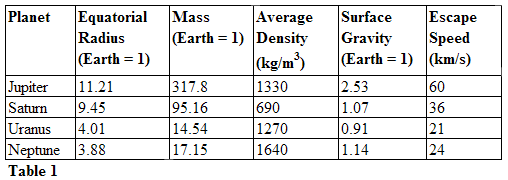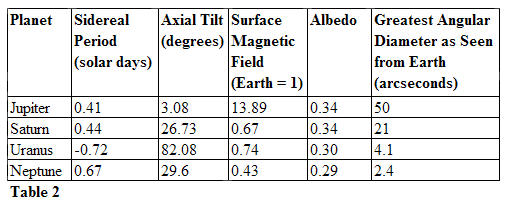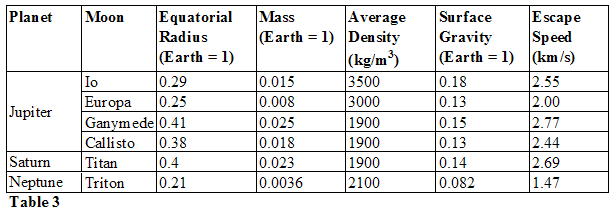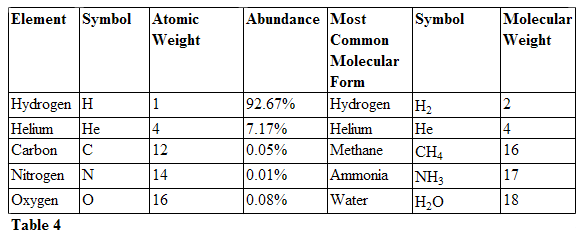Lesson 8 - The Jovian Planets
Reading Assignment
-
•Chapter 11.1: Orbital and Physical Properties
-
•Chapter 11.3: Internal Structure
-
•Discovery 11-1: Almost a Star?
-
-
•Chapter 11.4: Jupiter's Magnetosphere
-
•Chapter 11.2: The Atmosphere of Jupiter
-
•Discovery 11-1: A Cometary Impact
-
-
•Chapter 11.5: The Moons of Jupiter
-
•Chapter 11.6: Jupiter's Ring
-
•Chapter 12.1: Orbital and Physical Properties
-
•Chapter 12.3: Saturn's Interior and Magnetosphere
-
•Chapter 12.2: Saturn's Atmosphere
-
•Chapter 12.4: Saturn's Spectacular Ring System
-
•Chapter 12.5: The Moons of Saturn
-
•Discovery 12-1: Dancing Among Saturn's Moons
-
-
•Chapter 13.2: Orbital and Physical Properties
-
•Chapter 13.4: Magnetospheres and Internal Structure
-
•Chapter 13.3: The Atmosphere's of Uranus and Neptune
-
•Chapter 13.5: The Moon Systems of Uranus and Neptune
-
•Chapter 13.6: The Rings of the Outermost Jovian Planets
Summary of Jovian Planet Physical Data
Summary of Major Moon Physical Data
Summary of Five Most Abundant Elements
Math Notes
Roche Limit
Read Chapter 12.4.
-
•If a moon gets too close to a planet, it will be torn apart by tidal forces. The debris will then form a ring around the planet. If the moon is held together by gravity and its density is similar to that of the planet, this occurs at a distance of 2.4 × the radius of the planet. This distance is called the Roche limit.
-
•If the moon is held together by inter-atomic (electromagnetic) forces, as many small (<10 km in diameter) moons and asteroids are, or if its density is greater than that of the planet, its Roche limit is closer to the planet than 2.4 planetary radii.
Additional Notes
-
•There are no additional math notes for Lesson 8: This material is more qualitative.
-
•However, in Homework 8, you will apply Lesson 6's math notes as you compare the Jovian planets to the terrestrial planets.




